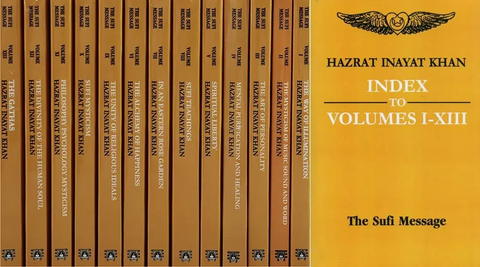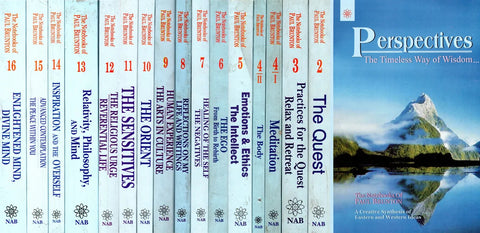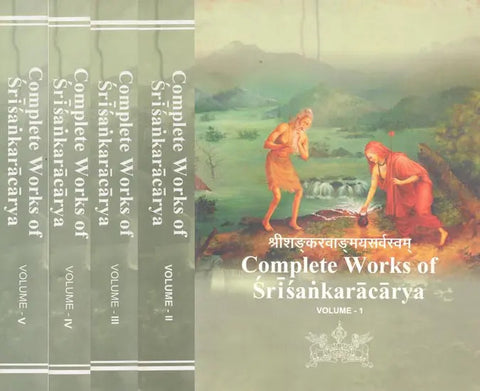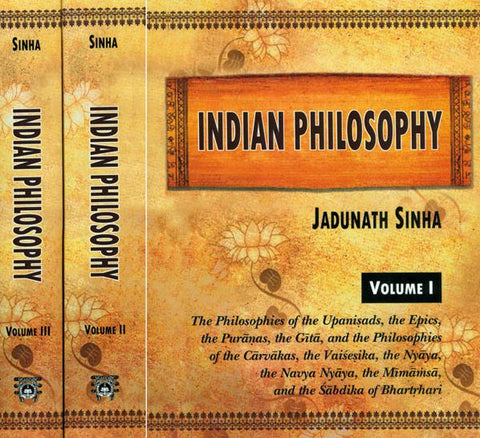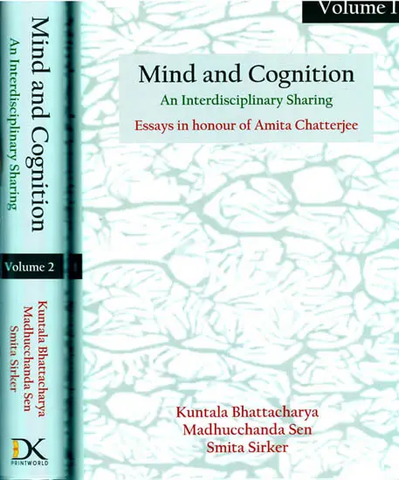Your cart is empty now.
The concept of geophilosophy, or to be more precise geo-metaphysics, is an enduring bond between the philosophical thought and its terrestrial support. Essentially the geographical positioning of a country influences its thinking and thus impacts its philosophy.
Sri-yantra, a mythical instrument, strikes a balance between the gross subtle and causal dimensions of the microcosmic and macrocosmic phenomena. It syncs with the esoteric ontology of the cosmos, the individual body, the state, the nation in its geographic aspect, all creative and conducive societal values, and the grand unification of existing dogmas, doctrines, creeds and commitments.
The author talks about his speculation of a triangular semblance of the Indian subcontinent and his intuitive experiences of ancient axioms of Eastern metaphysics. He elucidates that Sri-yantra, once esoteric, has become exoteric and can still retain its crown position in India. This book is a valuable accumulation of various facts, figures and values from myriad canons of mystic revelations. It also provides a type of interpolative vindication or justification of the two apparently conflicting ideologies of the oriental and occidental origins.
Sri-yantra has made a strong footprint in the geophilosophy of India and beyond, and has a major stake in India’s landscape, code of Indian civilization, and is set to make a difference in various walks of Indian life. this unusual volume sheds light on many a topic, which will interest readers of a wider spectrum.
Niraj Kumar (b. 1973-) is the author of magnum opus on Asian Integration, Arise Asia: Respond to White Peril (2003). He received initiation from Swami Ranganathananda-ji Maharaj of Ramakrishna Mission in 1992 and pursuing with perseverance the mantra of “Jiva is Siva”. His works feature in various international journals, magazines and newspapers. His area of exploration is confluence of science, spirituality and strategy.
I was introduced to the author by Rashneek Kher, one of his favourite old boys. I went through his blog and was amazed at the depth and gravity of his creativity. This book was a spontaneous produce of rare blend of innovative thinking on the lines of ancient mysticism and also an exuberant feat of discursive scholarship. I received a mail from Niraj Kumar requesting me to write Foreword for his book. The other aspect of this book pertaining to Indian mysticism has been the topic of my specialization for a few decades but I wasn’t as much familiar with Gilles Deleuze and Felix Guattari version of geophilosophy so there was no chance of ever trying to reconcile the two. Now I can thank to this laborious masterpiece of Niraj Kumar. I am sure most of the readers will also find this blend quite nourishing to their grey matter.
The concept of geophilosophy in Western thought evolved as late as in the 1990s, beginning from Edward S. Casey's vindication and Rene Descartes refutation of any such notion of "self and place" relationship. Martin Heidegger denies the continuation of this rejection by John Locke and evaluates this notion from the stand-point of qualia and thus delivers the planet as it were from the "ravages of calculative thinking".
A similar notion of philosophy with respect to geographic segmentation or to be more precise geo-metaphysics predates not only Deleuze and Guattari but even Descartes - the father of Western philosophy. Niraj Kumar with his stupendous knack of reconciliation has interpreted the arcane diagrammatic and phonetic encryptions in a contemporary verbiage to facilitate the comprehension of a modem man who might as well be more at home with Deleuze and Guattari rather than the discreet Sri-Vidya and Sri-cakra cult.
Divine mother as the presiding deity of the power of consciousness and her semiotic depiction of universality along with various complimentary projections of a single holistic principle has been the most adorable entity of .the theistic portion of Indian populace which is responsive and committed to the subliminal aspects of the faith of their ancestors. By Indian populace, I am not referring to their majority but authentic affiliation with the esoteric lineage through an unbroken chain of preceptors.
From a geophilosophic perspective, a multi-dimensional depiction of almost all areas of human cognitive faculties in time, space, substance and their interrelative reciprocation, is the most ingenious device of evaluating the space and self-rapport. Time, space and substantial conditioning are a three- dimensional limitation of the transcendental absolute. Cakra manifests as desa cakra (formation in space) and kala cakra (formation of consciousness in time) both in perfect unison transcend all names and forms, and lead to an insight into the universal substratum definable only in terms of asti, bhati and priyam (existence, consciousness and bliss). This substratum provides a concrete and metaphysically consistent base for all coveted values of an advanced human society.
The evolution of human society's culture and thought from nomadic to agrarian and then to rural and urban sophistication is efficaciously encrypted in this mystic diagram. The psychological evolution of humankind, as Aldus Huxley puts it, culminates onto the point of collective word and meaning, the very point conceived within an isosceles triangle that signifies a perfect equilibrium of collective will, wisdom and work. A disturbed proportion of the three leads to deviation and thus an unruly dissipation of collective synergy. On the- other hand, a well-balanced trio accelerates the pace of multifarious progress motivated by the synergy accumulated in the process of such orientation.
Sri-yantra is an instrument of striking a balance between the gross subtle and causal dimensions of the macro cosmic and microcosmic phenomena. It syncs with the esoteric ontology of the cosmos, the individual body, the state, the nation in its geographic aspect, all creative and conducive societal values plus a grand unification of all existing dogmas, doctrines, creeds and commitments. A highly contributory configuration of conflicting philosophic thoughts has been interlaced within the complexities of this yantra. This mystic configuration does not work only in a discreet mystic way but the output of synchrony with a socio-ethical system and cosmic principle of righteousness is also expressible in a trans- modernist verbiage. Collapse, a journal of trans-modernism as the author puts it, introduced him to the concept of geophilosophy (Collapse, vol. VI on Geo/philosophy).
I am aware of what we can term as hypothetical Sri-yantra, one of them is called desa cakra or cakra of space. Space as such is just not a geographic segmentation in the tradition of Indian metaphysics that is calculable terms of area or span but an ideal notion with references of directions. Place or space is defined in terms of north, east, south, west, north-east, south- west, north-west, up and down. This antique tradition just falls in with the author's view on the effect of place on an individual or self. West is related with euphoria and hedonistic temperament whereas east pertains to piety and righteousness. North is peace and tranquillity whereas south is aggression and violence, south-east refers to vice and transgressions, south-west refers to cruelty and hostility. These directions are arranged on the periphery of yantra. One can also find such variations in the human temperament and the evolution of the society according to their locus. Highly sensitive mystics and thinkers can also perceive such difference in their temperaments if they face a particular direction for some time.
Niraj Kumar in his speculation of a "triangular" semblance of the Indian subcontinent has intuitively experienced certain ancient axioms of Eastern metaphysics. Patanjali, the exponent of Sanskrit grammar, has not only demarcated geographic boundaries but has also enunciated ideal and ethical variation if one went beyond certain regions. (Patanjali's commentary on the aphorism emd pracam dese in his compilation of the eight chapters on Sanskrit grammar.) This was conceptualized in the sixth century BCE by Panini and was commented upon by Patanjali in 150 BCE.
Towards the end of his first chapter, the author leaves it to the reader to ascertain whether the once esoteric and now almost exoteric Sri-yantra can still retain its crown position in India. The answer, no doubt, is in affirmative. Sri-yantra is a paradigmatic hallmark of completion that has ample room for innovations and creative ventures, experimentations and refinements without actually deviating from the underlying streamline of consciousness that comprises the substrata of almost all areas of human thoughts, actions, desires, so on and so forth.
In the consequent chapter named "What Is India", Niraj Kumar has given an exhaustive cache of facts and figures taken from various sources. The esoteric justification of certain Puranic inconsistencies has been the forte of Sri-Vidya cult which is why these concepts cannot be rejected straightaway as impossible. Four oceans with wine, ghee, syrup and milk filled in them do not exist in the real world so we do not just reject them as mythical. They are conceived as the four principal objectives of the human life - money, sex, religion and emancipation. All mythological descriptions have been esoterically deciphered by our hoary sages. It is only through their uninterrupted lineage that we can fathom the mysteries of “Sri-yantra and Indian subcontinent analogy".
A topographic configuration of Indian thought ranging from atheists, Jainas, Buddhists, agnostics, obscurantists, sceptics and determinists, Vaisesika, Nyaya, Samkhya, Yoga, Purva- and Uttara-Mimamsa schools all are arranged along various peripheries of the mystic diagram. Surprisingly their corresponding regions in the gross geographic realm can be easily traced for the collective mindset as influenced by those doctrines. We also have various Smrtis each with its root in a particular philosophy.
For example, Samkhya (likhita smrti) is based on Vaisesika school of thought. Yajnavalkya's Apstamba is based on the Purva-Mimamsa school of thought. This geophilosophic variety accounts for the ethical and moral disposition of various geographic segments. Needless to say that all this is contained within a single unified domain of the conscious substratum of the entire universal phenomena.
Besides a valuable accumulation various facts, figures and values from myriad canons of m tic revelations in one place this book also provides a type of interpolative vindication or justification of the two apparently conflicting ideologies of the oriental and occidental origins. Readers of more qualitative inclination than quantitative or analytical might as well skip certain details of highly quantitative and terse rational nature and resume reading the prose part of book. All ontologies and diagrams are lucid and flawless, This book being a resultant of assiduous research must not be put aside as lacking "interest factor". It rather refines your taste as you proceed with reading. This type of work is just what we require after the phase of justification of spirituality in a scientific way or vice versa was over, i.e. in the late 19 Os and early 1990s. Paradoxically the• scientific justification came from the men of religion who had no science and the metaphysical vindication of science came from some scientists who had no religion. Evaluation and vindication of the E tern metaphysics, methods and axiom from a socio-political, geographic and economic perspective were just what the literary world needed desperately.
FOR decades, I have been jotting down my bodily and dream experiences while on a quest for quintessence of Reality. Since childhood, I always felt that I was living in simultaneous worlds. First inkling of a beyond world came when I was six- year old. That was my birthday and suddenly a thought sprang - "Who Am I?” I went before mirror, saw my image and experienced the first rapture. I felt the vacuity. I was not That, then "Who am I?” The mirror became my virtual guide. The strange experience upon seeing duplication of myself in reflection has accompanied me till now. This has allowed me to peep through the mirror of wandering mind, India's civilizational structures.
I moved to Jammu in November 1983 to study in a Sainik School. My school was located in Nagrota right on the bank of river Tawi descending from the Sivalik hills. The Trikuta mountains lie just opposite the school campus and the illuminated pathway to the sacred shrine of Mata Vaisno Devi held strong attraction for an incipient mind. The devotion to the divine Mother intensified. The three peaks of Trikuta appeared sentient. The mystery of triad intruded silently into my consciousness with an exciting event in 1988. One of my classmates often made fun of my interest in reading Swami Vivekananda's work. We were playing a cricket match in opposite teams. I was bowling and had taken consecutive wickets in two balls. My bete noire joined the batting. While turning back to bowl, I was facing the Trikuta hills. I prayed the Sakti to get off the "off stump", since in earlier two wickets, the leg stump and the middle stump had fallen. I ran, my eyes closed. Lo! The off stump was gone. It was a tremendous hat-trick. But, a serious question crept into mind, "How did the prayer to the three pindis worshipped in the cave in a three- peaked mountain, influence the three stumps in a cricket match?"
I was initiated by Swami Ranganathananda-ji Maharaj of Ramakrishna Mission/Order in June 1992. Certain mystical experiences led me to the wilderness and to abstain from competitive race for career. While engaged with certain practices, I encountered a transfiguration in my room in September 1993. This led me to rush to various spiritual luminaries seeking a way to reconnect with the unknown monk. I began to frequent cremation grounds at midnights and learnt to sit in meditation on the bank of the Ganges under the warmth of funeral pyres. That was how my fascination with the esoteric cults developed.
The quest to seek the rules of the multiplicity, morphological resonance, entanglement of the presences with absences, the mysterious attraction of the triadic things continued unabated. In this quest, I succeeded in perfect failures. I tried many things and accomplished nothing. And once while I was doing shopping in the year 2010 at Lajwanti Garden, Delhi, the thought popped up to purchase a copper Sri-yantra as an auspicious wheel of fortune. Happily I bought one and told my kids and wife, "Good luck return!" Alas! That was not to be. But, I worshipped the yantra and recited Lalita Sahasranama for few days. I tried to visually pierce Sri- yantra. In turn, I was pierced. It was a kind of non-intended consequence. There was samavesa of the unknown presence.
I may merely say that this unusual book was never planned to write. It happened without expertise in the science or Sastra, Vedas or Tantras. Sometimes, the unknown is the best author. Much of the correlations and the connections in this book emerged on their own. The wandering mind has this unique charm of allowing democracy of ideas. When one builds up heuristic designs and work under paradigms, the hierarchical set-up disrupts the wonderland of ideas. By weaving the strange ideas, the work has taken the shape of a garland.
And a work was never intended that too on obscure subject of Sri-yantra and Deleuzian geophilosophy. It emerged and is now in the hands of the readers to allow their minds to wander in the wonderland of chimerical ideas. Martin Heidegger wrote in the essay, “The Thinker as Poet” (1947):
Three dangers threaten thinking. The good and thus wholesome danger is the nighness of the singing poet. The evil and thus keenest danger is thinking itself. It must think against itself, which it can only seldom do. The bad and thus muddled danger is philosophizing.
The present work is a complex battlefield of thinking itself. May God take each reader to the world without words!
| Foreword | vii | |
| Preface | xiii | |
| Acknowledgement | xxi | |
| 1 | The Geophilosophy of India and Sri-yantra | 1 |
| Geographical Roots of Thinking | 2 | |
| Locating Rhizomic Nature of Indian Thinking | 19 | |
| 2 | What Is India? | 27 |
| Algorithm of Indian Landscape: lteration | 35 | |
| Mirror Reflection (Abhasa) Generates Multiplicity | 44 | |
| 3 | Sri-yantra: The Ultimate Code of Indian Civilization | 48 |
| Triadic Thinking and Iteration | 50 | |
| Sri-yantra as Sheaf of Indian Thought | 53 | |
| Drawing a Sacred Triangle on India's Geobody | 57 | |
| Sri-cakra and Sri Kalacakra | 59 | |
| Sri or Tri? | 61 | |
| 4 | Meru and Sri-Yantra | 63 |
| Origin of the Concept of Meru | 64 | |
| Aryabhata and Meru in Mathematics | 67 | |
| Meru in Mahabharata and Puranas | 71 | |
| Meru Goes Asian | 74 | |
| Sri-yantra and Meru | 76 | |
| 5 | Sri-yantra : Structural Properties | 80 |
| Sri-yantra : An Enneagram of Human Body | 82 | |
| Basic Structure of Sri-yantra | 84 | |
| Mathematical Properties | 91 | |
| Sri-yantra and Higher Algorithm of Algebra | 98 | |
| Fractal and Sri-yantra | 103 | |
| Sri-yantra and New Genetics | 105 | |
| 6 | Sri-yantra and Quest for Higgs Boson | 109 |
| Is Higgs Boson Sodasi? | 111 | |
| Triadization of Universe | 116 | |
| Unifying Relativity and Standard Model | 126 | |
| Through Timbuktu Algebra | ||
| SUSY as Grand Sri-yantra | ||
| 7 | Sri-yantra : Footprints from Katra to Paris | 134 |
| Star of David as Meru of Sri-yantra | 135 | |
| Sri-yantra: Secret of Memory | 136 | |
| Sacred Network in Paris | 137 | |
| Cosmo-telluric Lines and Ma Vaisno Devi Shrine | 141 | |
| 8 | Bharata Mata: Map and Sri-yantra | 145 |
| India's Imagined Sacred Landscape | 146 | |
| Cartography of India | 148 | |
| Bharata Mata | 150 | |
| Bharata Mata and Lalita Tripurasundari | 155 | |
| Bankim Chandra Chatterjee and Goddess Durga | 163 | |
| Geophilosophy of Bharat Mata | 166 | |
| Trans-modern Synthesis | 168 | |
| 9 | Pleading for a New National Flag | 171 |
| Adopting the National Flag | 171 | |
| Quest for National Flag | 184 | |
| Triangular Flag for India | 190 | |
| New National Flag with Sri-yantra Emblem | 199 | |
| Conclusion: | ||
| Avatarana of India's Past of Abundance | 206 | |
| Bibliography | 208 | |
| Index | 217 |
Delivery and Shipping Policy
- INTERNATIONAL SHIPPING
- Rs.1000-1100/kg
- ESTD. Delivery Time: 2-3 weeks (depending on location)
- Bubble Wrapped with Extra Padding
- NATIONAL SHIPPING
- NCR: Rs. 30/half kg
- Standard: Rs. 80/half kg
- Express shipments also available on Request
- ESTD. Delivery Time: Ranging from 1-4 days up to 7 business days (Depending on your choice of Delivery)
- TRACKING
- All orders; national or international, will be provided with a Tracking ID to check the status of their respective orders
- Depending on the Shipping Service, Tracking ID may be used on their respective tracking portals
Frequently Asked Questions (FAQs)
Domestic Shipping: 3-4 Days (after shipping)
International Shipping: 1-2 weeks (based on your location)
You will receive an email once your order has been shipped or you can email us if you didn't receive tracking details (info@mlbd.co.in)
Every book that we sell is the latest edition except all the rare books
Yes, we do provide free shipping, only on domestic orders (within India) above Rs.1500









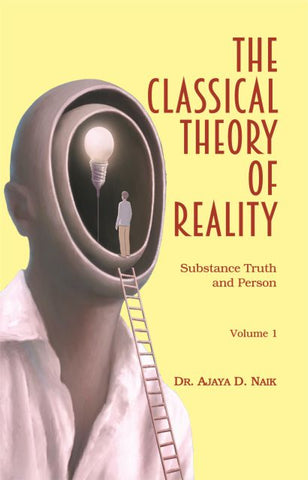
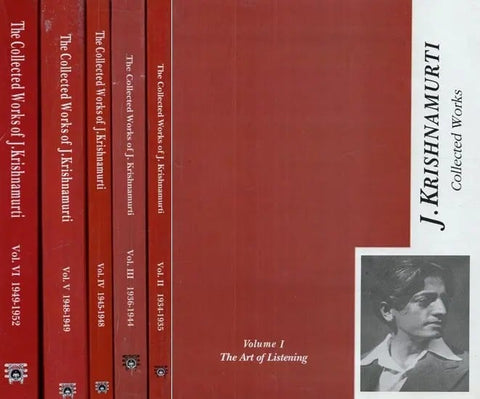

![A HISTORY OF INDIAN PHILOSOPHY [5 VOLUMES] by Surendranath Dasgupta](http://www.motilalbanarsidass.com/cdn/shop/products/HISTORYOFINDIANPHILOSOPHY_large.jpg?v=1675238163)
